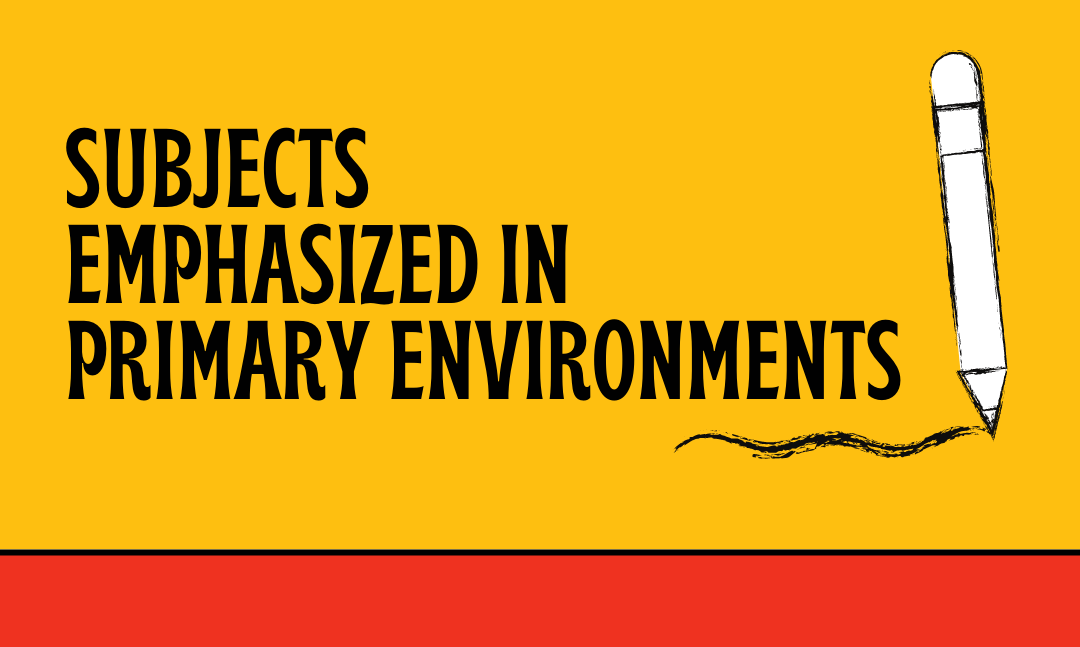As the Montessori Method is designed to mirror a child’s biological development, it makes sense that each environment treats subjects slightly differently. Primary environments include children ages 3 to 6 – a time in life where children are grasping and perfecting foundational skills.
The primary environment was one of the original groupings that Dr. Maria Montessori cared for at her Casa dei Bambini. According to the Association Montessori Internationale, she found that they, “learn best through real-life activities that support independence and self-efficacy; manipulation of objects to provide concrete sensorial experience; and open-ended exploration leading to the refinement of their movements, sensory perceptions, language and the development of their intellect.”
In the primary environment at Maria Montessori School, our students explore the following subjects: practical life, sensorial development, language arts, geometry and mathematics, geography, science and fine arts. Many of these subjects are familiar to parents and families who attended traditional American schools. The way we approach them might be a little different.
Practical life and sensorial development
Practical life and sensorial development are the two primary areas of focus that are least familiar to many parents. But, these are areas you also learned in school without knowing! Practical life is simply learning to care for oneself and your learning environment. At MMS, that takes shape through handwashing, simple cleaning, tidying up one’s space and other age-appropriate activities. Sensorial development helps students differentiate and use their five senses. Oftentimes, lessons in sensorial development overlap with other areas of focus.
Language arts
Development and refinement of language is a critical part of the primary environment. At MMS, our primary students learn lessons in phonics and the sounds within language. They also start to explore writing style and “creative writing” using moveable alphabet tiles. One difference you might note in our primary environment compared to contemporary American schools is the presentation of cursive and standard letters. Dr. Montessori included cursive writing in her original curriculum because it was the standard of the day. But connected script letters can sometimes be easier for children to form. Creating opportunities to use both types of lettering allows children to explore a variety of letter formations and develop a deep-rooted understanding of both styles.
Geometry and mathematics
Discovering shapes and the mathematical principles behind them is an important part of the primary curriculum. Delivering these lessons through the use of manipulative materials is often one of the most easy to understand methods for parents and guardians educated in traditional American schools. For example, we use number beads to help children visualize the concepts of addition, subtraction, multiplication and division. It is also common to see tools, like an abacus, on display in a primary classroom.
Lessons in foundational mathematics is a hotly debated topic in education. Some educators feel strongly that there are “right” and “wrong” ways to process numbers and come to conclusions. Others are embracing varied ways of thinking that allow students to use number groups or varied concepts to grasp the foundations of math. Exploring these principles using visual aids is a great way for students to develop their own sense of understanding.
Geography and science
We can all agree that science is fun when lessons are hands-on! Exploring soils and conducting experiments are a part of our primary environment. Our students partake in indoor and outdoor lessons, encouraging organic discovery and wonder about the organic world around them. Similarly, our students learn lessons about the man-made constructs that shape our globe. Lessons in geography and civics are popular in our primary environment – you’ll often find students on the floor completing freeform puzzles of European nations or examining flags from around the world.
Fine arts
Do you remember lessons put to song from your childhood? Some of us still rely on musical support to name all 50 states or recite our times tables! Music is a powerful tool that is explored in Montessori primary environments, but it’s purpose extends beyond simple memorization. Music and arts more broadly are excellent tools to support the development of coordinated movement. As children strike a drum or make a stroke with a brush, they are fine tuning the muscles in their hands, wrists and arms. These fine motor skills are critical to functioning adults and can be honed through artistic exploration during childhood!

